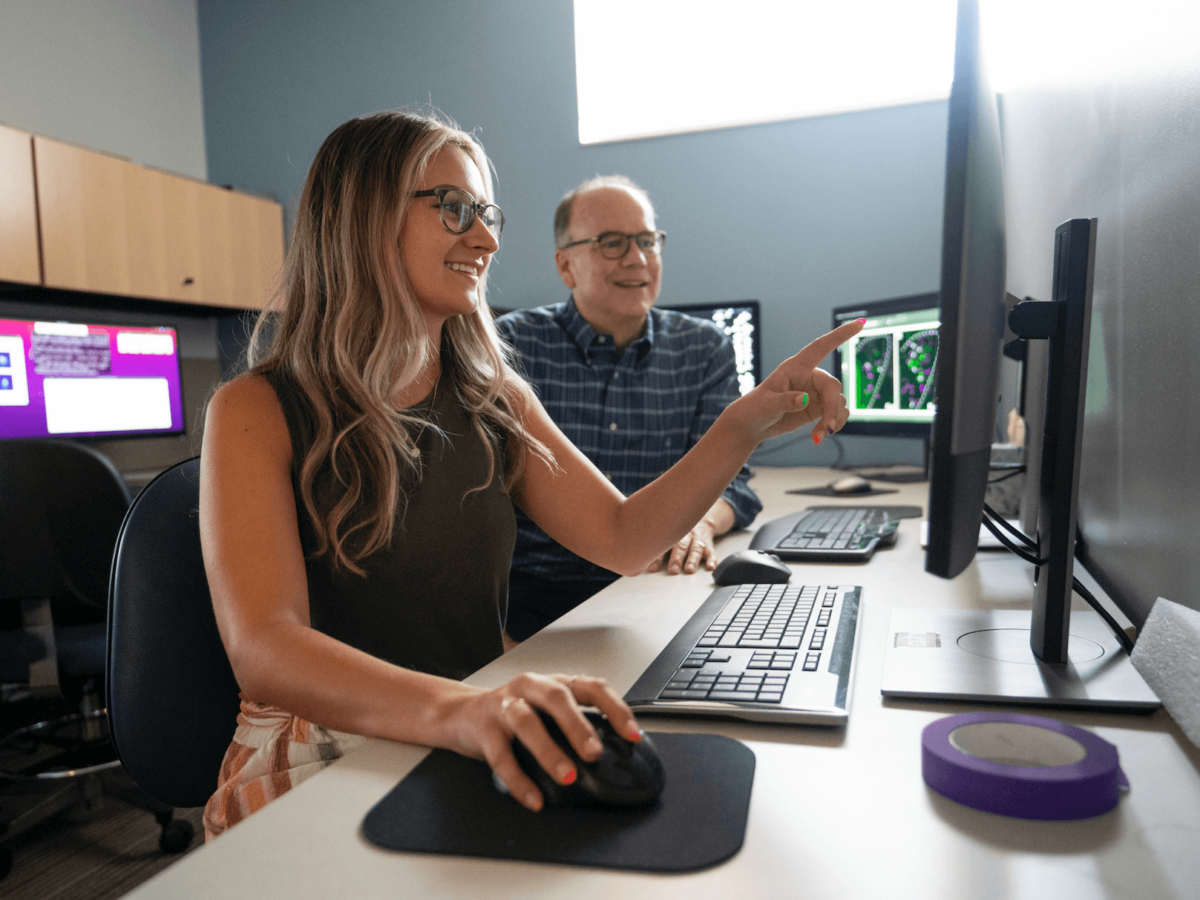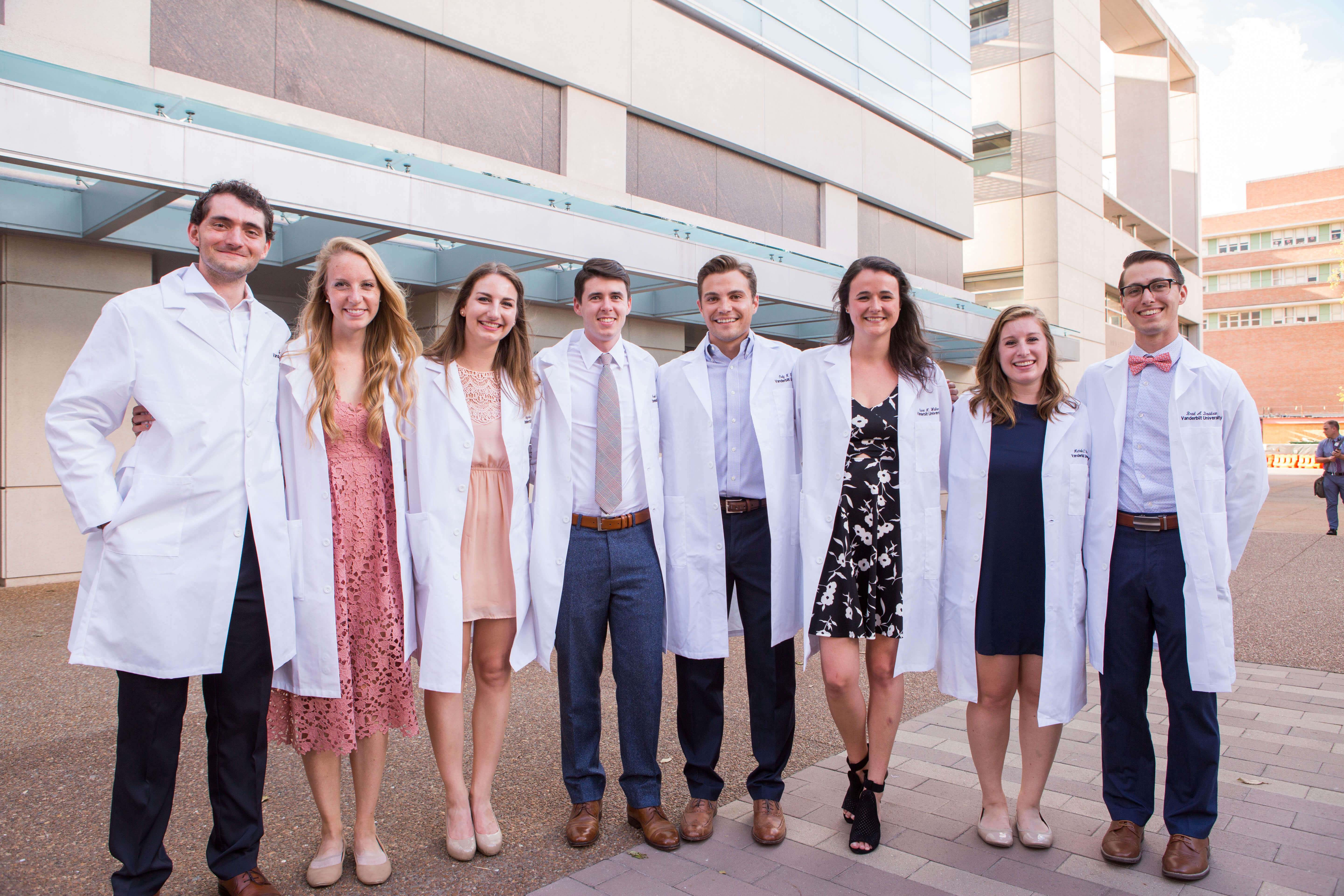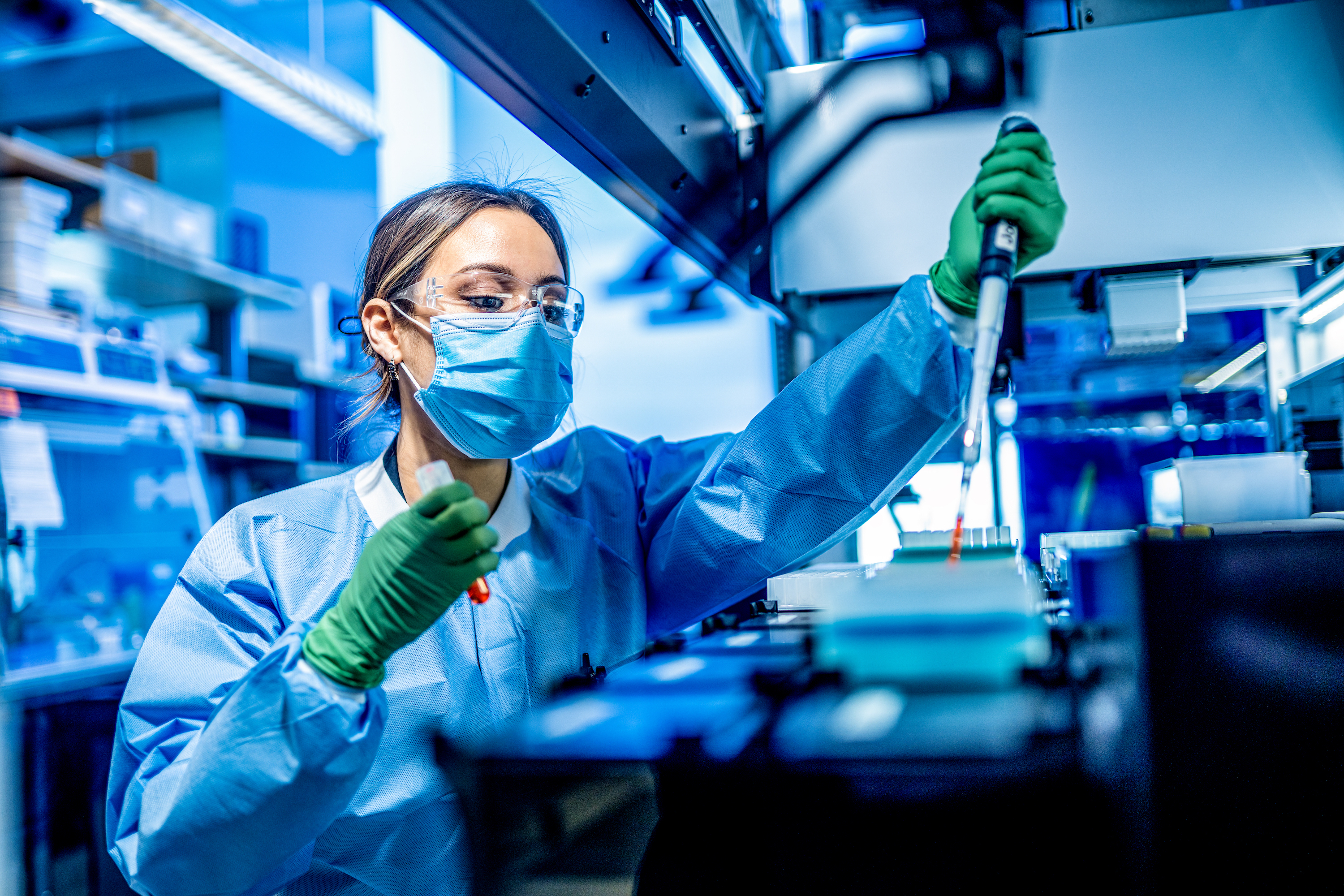Vestigo
Vestigo is a print and online magazine published by the School of Medicine Basic Sciences at Vanderbilt University. Published twice a year, Vestigo provides an in-depth view of research that’s happening in our community, highlights trainee accomplishments, and celebrates the successes of our staff and faculty. Through our work, we hope that you will appreciate the vision we have for the future and the steps we are taking to get there.
Vestigo (ves-TEE-go) comes from the Latin “vestigare”: to discover, search after, seek out, inquire, investigate. It encapsulates the spirit of discovery and dedication to research we strive to embody at Vanderbilt University Basic Sciences.
Experience issues 1–3 with AR!
Quick Guide
In a tapestry of scientific endeavor, the cover art weaves a narrative that traverses the evolving landscape of cellular imaging. 1920s medical illustrator Susan Wilkes’ masterful strokes join the intricate details revealed by transmission electron microscopy in the research lab of Antentor Hinton Jr. and the vibrant revelations afforded by high-powered light microscopy in the lab of Matthew Tyska. This visual symphony pays homage to the ceaseless march of innovation in scientific instrumentation. It is a nod to the scholarly pursuit of unraveling the enigmatic wonders of the cellular and subcellular realms in the foundational studies of basic sciences. Art by Kendra H. Oliver.
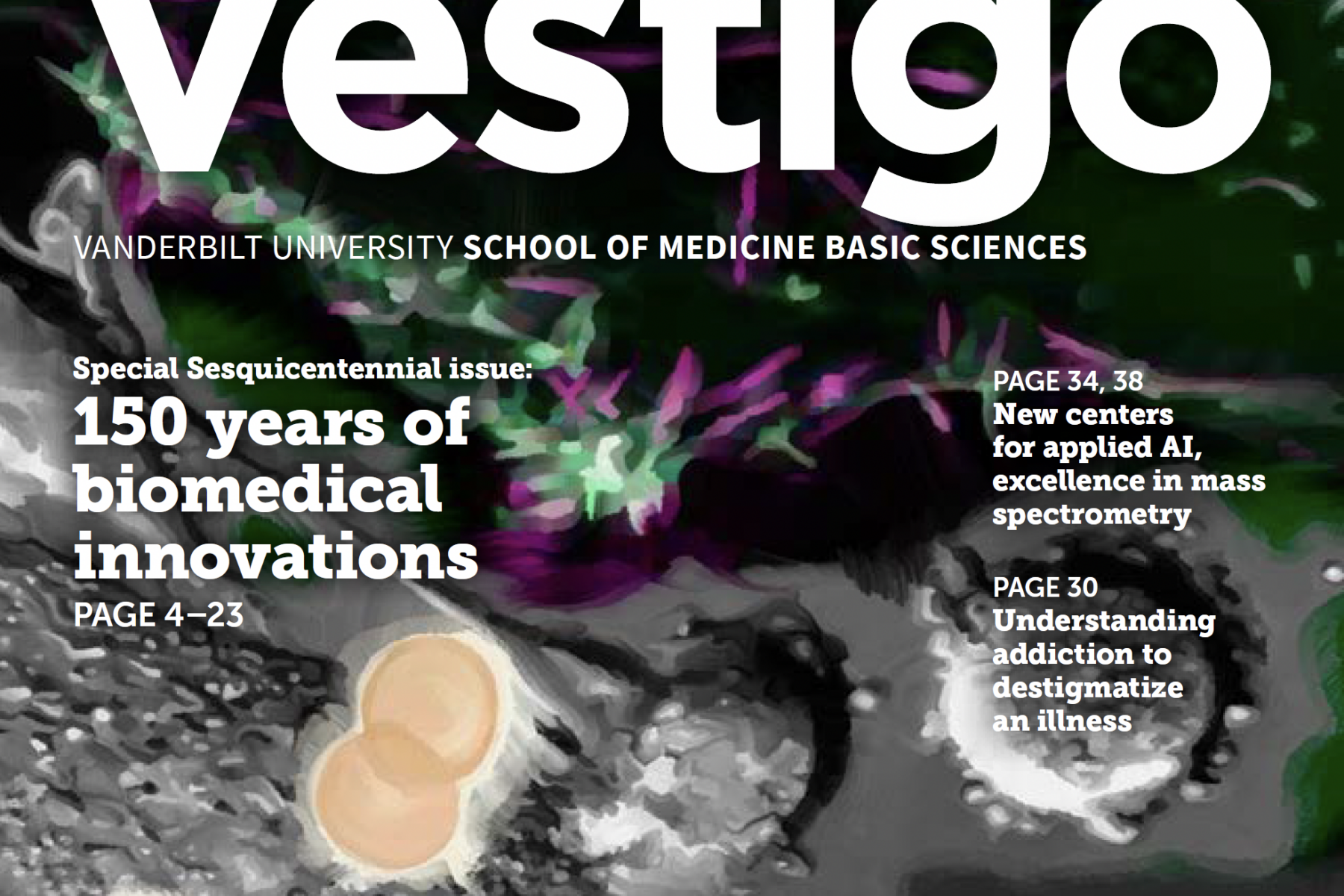
A celebration of Larry Marnett's work with COX-2, a human enzyme that is targeted by non-steroidal anti-inflammatory drugs. This image, drawn by Kendra H. Oliver, is based on the structure of the NSAID isoxicam when bound to COX-2.
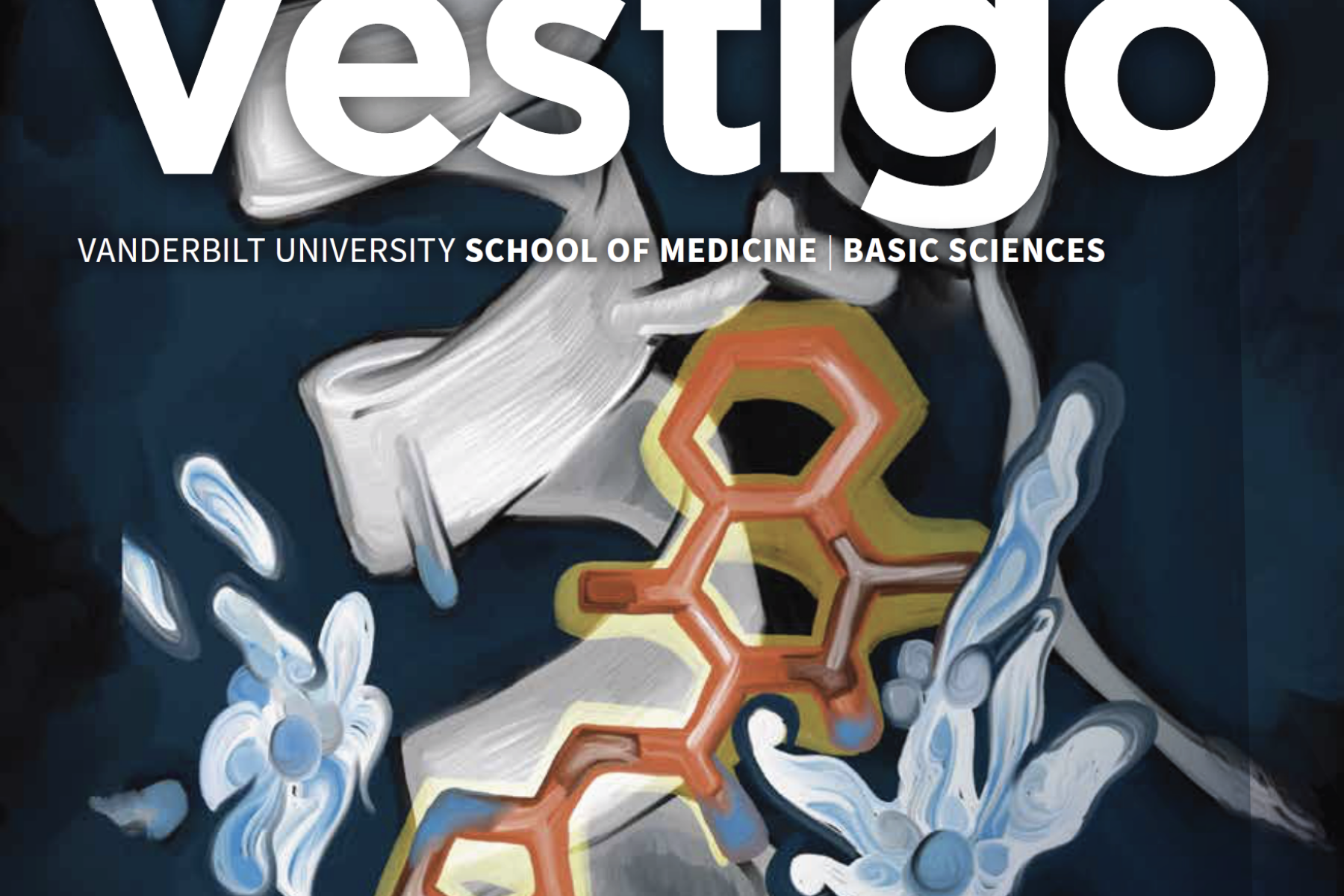
An artistic interpretation of a two-dimensional brain representation generated by José Maldonado through whole-brain imaging conducted in the new Vanderbilt Neurovisualization Lab at Vanderbilt University.
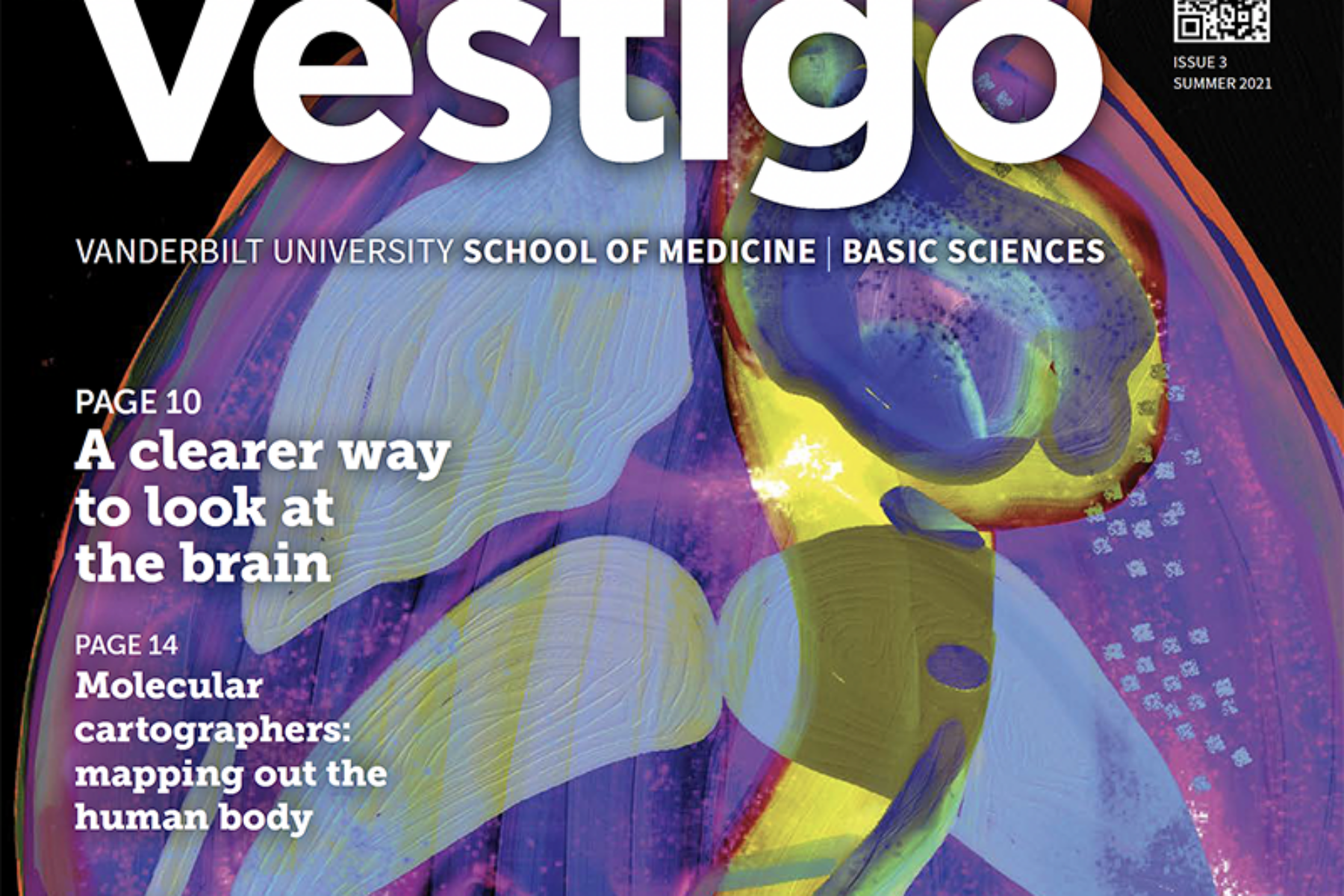
The color palette used in the creation of the cover was generated by graduate student Jacob Steenwyk (laboratory of Antonis Rokas, professor of biological sciences), who was inspired by the Laccaria amethystina fungus.
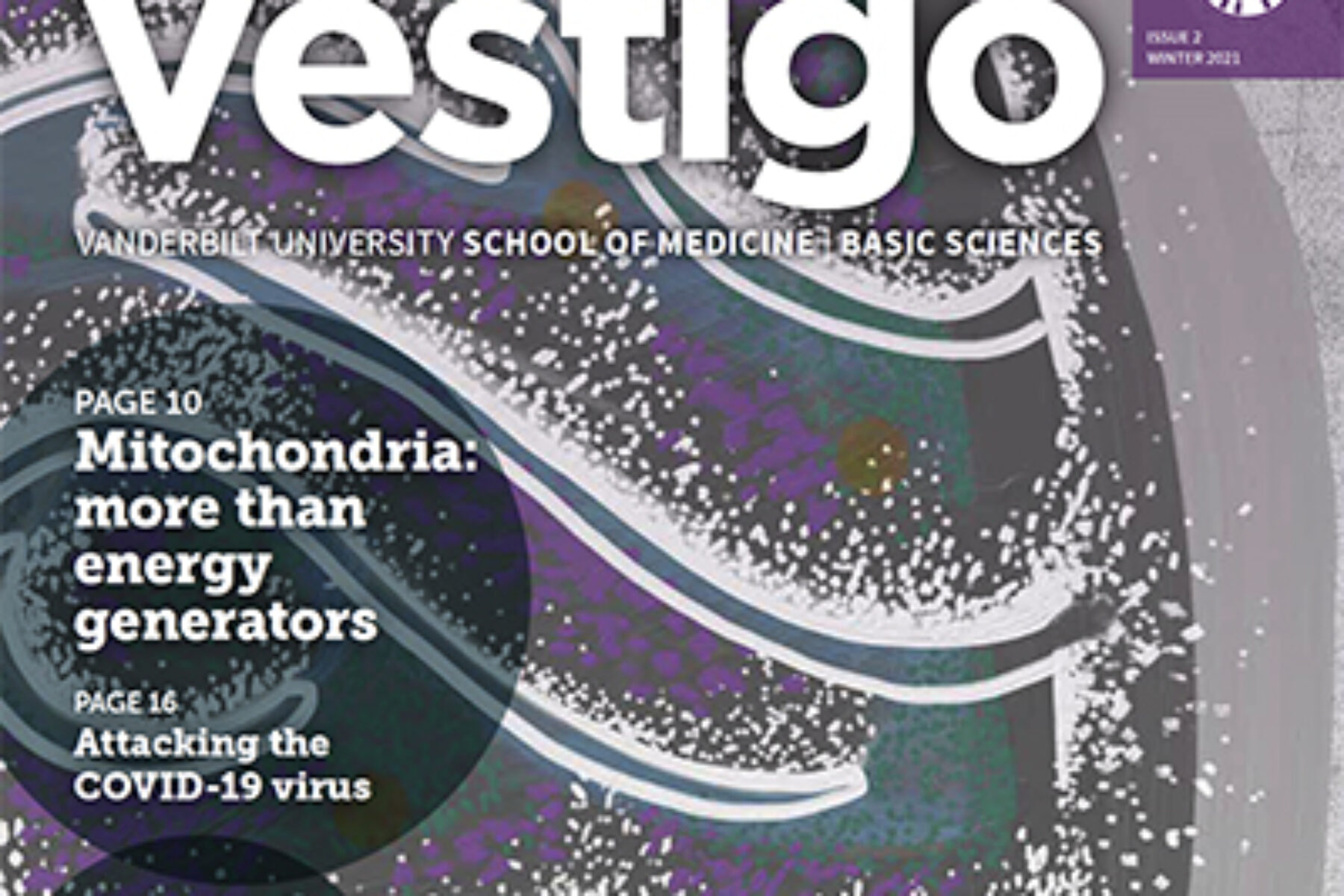
An artist's rendering of AMPA receptor, focus of study for Terunaga Nakagawa (page 13).
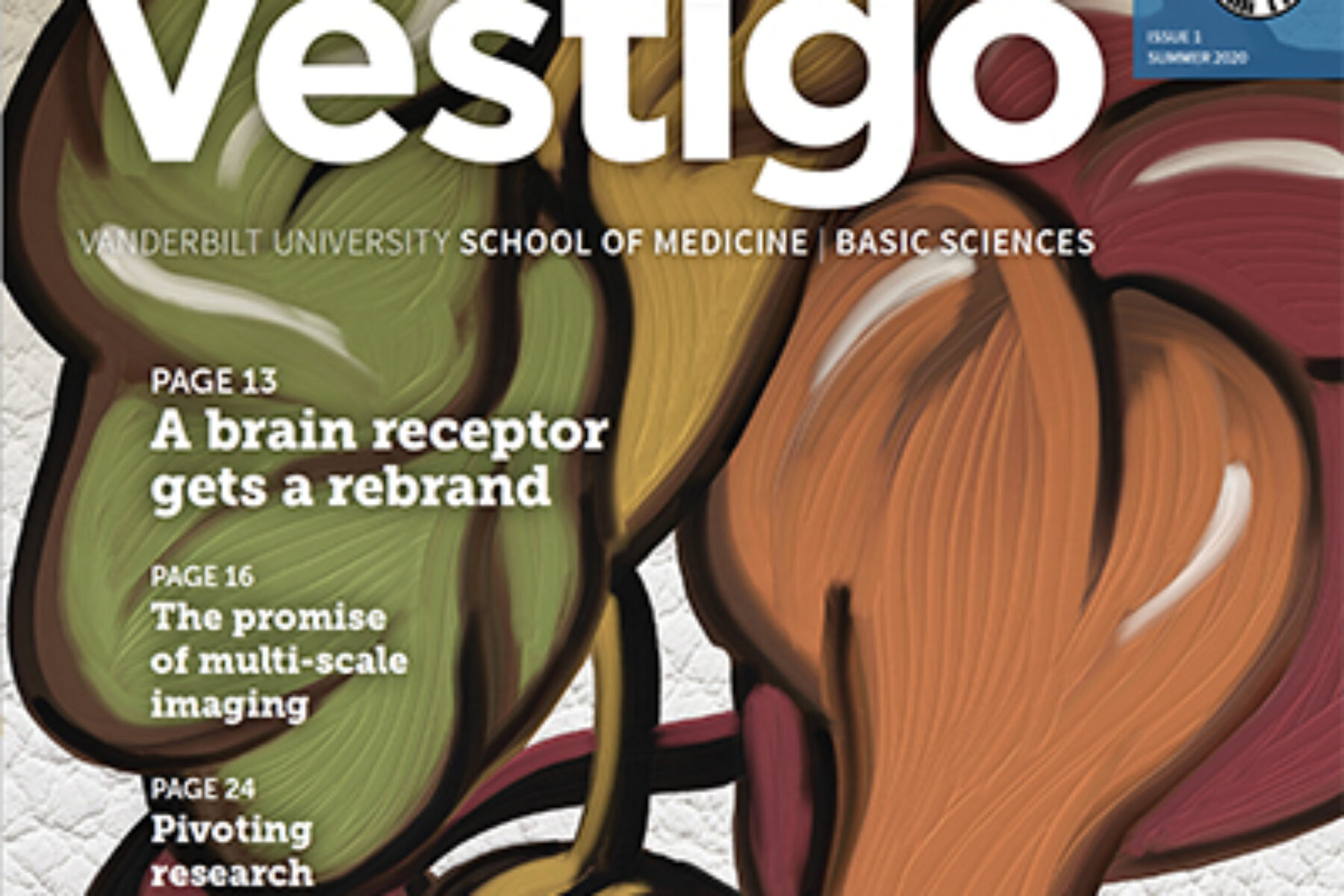
Vital
A monthly newsletter with the short-and-sweet of what's new at Vanderbilt Basic Sciences.
Basically Speaking
A more in-depth monthly newsletter than Vital. Each month we bring you the latest awards, highlights, events, and more from graduate students, postdocs, faculty, and staff conducting basic biomedical research on campus.
Past Publications
The Reading List
This weekly newsletter contains recent research papers and preprints published by primary and secondary Basic Sciences faculty or by biomedical Ph.D. students. Although we do our best to monitor for new papers, we may miss some here or there. Email us if your latest work hasn’t been included yet!
